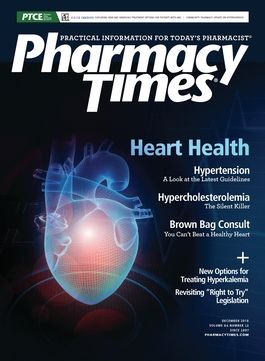Publication
Article
Pharmacy Times
Surprise! Care Coordination Requires Relationships With Other Care Team Members
I have had the privilege over the past nearly 2 decades to work with a great team of experts at Community Care of North Carolina and its more than 2000 affiliated practices in community-based care delivery and the patient-centered medical home movement.
The Patient-Centered Medical Home Requires Extensive Human Infrastructure
I have had the privilege over the past nearly 2 decades to work with a great team of experts at Community Care of North Carolina (CCNC) and its more than 2000 affiliated practices in community-based care delivery and the patient-centered medical home (PCMH) movement. At the core of PCMH is the primary care provider (PCP) and quarterbacking care, extending accountability for healthy patients beyond the typical 4- to 15-minute encounter that our fee-for-service system of reimbursement has imposed on PCPs. Doing so requires reaching beyond the 4 walls of the clinic and providing a lot of extra help in activating and engaging patients to become more involved in their own care where they live, play, and work. With nearly 1000 ancillary personnel, including social workers, nurses, behavioral health support workers, community health workers, embedded pharmacists, paramedics, and even chaplains from time to time, CCNC directly and indirectly deploys substantial resources to support accountable care and population management contracts now commonplace on the medical side of our health care ledger.
Health Systems and Physicians Feel the Heat on Accountable Care and Patient Outcomes
Health systems and medical practices have increasingly been given incentive to make investments in improving quality measures and saving dollars. In 2016, about 40% of all physicians received some sort of pay-for-performance incentive for population management activities and results.1 Nearly every hospital and primary care office in the United States now participates in accountable care in some way, and many institutions are getting involved in downside risk. More than 60% of physician practices are contracted to pay the government back through reduced fees or paybacks if they underperform on spend and quality measures, such as improving and keeping blood pressure, hemoglobin A1C, and lipid levels at goal.2 These measures present an opportunity for community-based pharmacies, which interact with patients at a much more frequent rate and are in an opportune position, to coordinate care and optimize medications because most accountable care measures are medication related.
Community Pharmacy Dabbles in Care Management and Primary Care Supports
About 4 years ago, CMS tapped CCNC to test whether community-based pharmacies could be successfully integrated into these new collaborative models of care with new types of payment models. Nearly 300 pharmacies in North Carolina participated and were asked to provide enhanced services that supported care management efforts. In doing so, they received a per-member, per-month payment for every patient with a chronic illness. Emphasis was placed on synchronization with clinical reviews, care planning, home visits, regular follow-up, and close communication with care team members.
Participation in New Models of Care and Payment Requires Strong Interorganizational and Interprofessional Relationships
One of the first studies of the project was released recently, and results showed, perhaps not surprisingly, that existing interpersonal and interprofessional relationships between pharmacies and other health care organizations in the community were strongly associated with successful deployment of these enhanced services. This has profound implications for community pharmacy’s evolution toward a more pronounced role in emerging systems of care and financing. Essentially, Turner et al found that attempting to launch a team-based, enhanced services—based model in a pharmacy is next to impossible without first establishing working relationships with other care team members.3 I suppose in hindsight that would be intuitive, but now we have solid evidence that speaks to the imperative.
Troy Trygstad, PharmD, PhD, MBA, is vice president of pharmacy programs for Community Care of North Carolina, which works collaboratively with more than 1800 medical practices to serve over 1.6 million Medicaid, Medicare, commercially insured, and uninsured patients. He received his PharmD and MBA degrees from Drake University in Des Moines, Iowa, and a PhD in pharmaceutical outcomes and policy from the University of North Carolina at Chapel Hill. He also serves on the board of directors for the American Pharmacists Association Foundation and the Pharmacy Quality Alliance.
References
- Robeznieks A. 8 provisions that can make or break pay-for-performance contracts. AMA Wire website. wire.ama-assn.org/practice-management/8-provisions-can-make-or-break-pay-performance-contracts. Published March 22, 2018. Accessed November 21, 2018.
- Dickson V. 60% of medical practices’ Medicare revenue expected to be risk-based by 2019. Modern Healthcare website. modernhealthcare.com/article/20171213/NEWS/171219954. Published December 13, 2017. Accessed November 21, 2018.
- Turner K, Weinberger M, Renfro C, et al. The role of network ties to support implementation of a community pharmacy enhanced services network [published online September 27, 2018]. Res Social Adm Pharm. doi: 10.1016/j.sapharm.2018.09.015.







